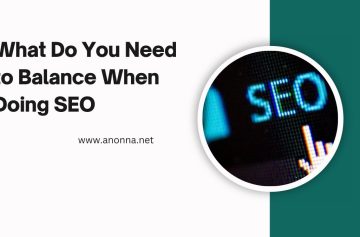
Where to Include City Names for Local SEO in Blogs: Best Practices for Higher Rankings
Why Local SEO Matters and the Role of City Names in Search Results. Local SEO plays a vital role for businesses, bloggers, and service providers targeting audiences in specific locations in today’s online world. Whether you have a local business, a niche blog with regional content, or offer services with a location-based product, optimizing local search terms can take organic visibility and traffic to the next level.
Incorporating targeted city names throughout your blogs is one of the best and easiest things you can do to improve your local SEO. Location-based keywords govern how well search engines like Google source content that matches the needs of local searchers, allowing users to find content on the web that suits their geographic purpose.
To illustrate, when someone types in “best digital marketing agency in Austin, TX,” Google will favor results that mention “Austin, TX” in prominent sections of the content. Your blog may have the best content possible, but if it doesn’t include key SEO elements (e.g., the city name) in those elements, you can struggle to rank for relevant local searches.
The Benefits of Properly Categorizing Your City Names for Local SEO
Including city names in your blog helps, but throwing them around unnecessarily will cost you more than you could imagine, i.e., a good read with an SEO performance. Success lies in understanding where and how city names should be positioned to:
✅ Help Google understand your content’s local relevance.
✅ Let users quickly know that your content is related to their area.
✅ Improve on-page SEO without compromising the reading experience.
When city names are used in major on-page SEO components like titles, meta descriptions, headers, and in the body content, they help you rank higher in the local SERPs, target the ideal traffic, and increase the conversion rate.
Purpose of This Article
This website’s SEO guide helps bloggers and businesses to better position city names in their blog post content. Using these optimization techniques, you can:
📌 Improve local search rankings and enjoy geo-targeted traffic.
📌 Focus on user experience by providing content that matches local search intention.
📌 Watch out for pitfalls such as keyword stuffing or forced placements.
The Importance of Including City Names in Local SEO
City names are important for local SEO, as they enable businesses and content creators to reach their target audiences in specific areas. Whether you’re writing local service content, a travel guide, or a post about a regional business, optimizing for local search intent improves your likelihood of hitting the top of local search results.
Top 5 Reasons Local SEO is Important for Your Blog Content
📌 The Way Local Searches Gets Traffic and Conversion
Users tend to search for services, businesses, and info around their vicinity, and this is one of the main reasons local SEO is very important. Almost 46 percent of searches have local intent, which means that users search for results within a specific city, neighborhood, or geographic area, according to Google.
If a user searches for “best coffee shops in San Diego,” they’re going to want results specific to San Diego, not generic coffee shops. Websites can: By using city names strategically throughout increasingly content-rich articles and blog posts
✅ Boost visibility in Google’s local-search results (the Google Map Pack & organic listings).
✅ Get more quality visitors who are looking for location-based content.
✅ Increase conversion rates with appropriate and helpful local information.
What Are the Three Major Components of Google’s Local Search Algorithm?
When displaying local search results, Google’s algorithm accounts for three main ranking factors:
1️⃣ Relevance — Does content fit what the searcher is looking for? Mentioning the name of a city helps identify the location importance of a blog post.
2️⃣ Proximity — How far away is the searcher from the business or place referenced in the content? When the city names are unambiguous, Google weights the results by the user’s location.
3️⃣ Prominence — How authoritative is the content? Well-optimized blogs that have good local backlinks and high engagement are noticeable on local searches.
Bloggers and businesses can align themselves with Google’s local ranking factors and improve the potential for geo-specific searches through city name optimization of content.
How Google Leverages City Names to Authoritatively Rank Local Content
Why Local Search is a Function of Relevance, Proximity, and Prominence
For good visibility in local searches, Google measures the content relevance with local user intent.
🔹 Relevance – Whenever a blog post says “Top 10 Digital Marketing Agencies in Seattle”, Google recognizes Seattle as the location and ranks the content up as per the relevant query.
🔹 Proximity – If a user in Seattle searches for “best SEO agencies near me,” Google favors content with location keywords like “Seattle-based SEO experts.”
🔹 Prominence — If you have a lot of reviews and your website has a lot of ‘authority’ (view solution parts) and is prominently referred to many times in a city, your search result appears closer to local search results.
How Blogs Use Geographical Keywords and How Search Engines Detect Them
Search engines understand city names and location-based keywords using:
✅ Title tags and meta descriptions – Identify city names to suggest local search intent.
✅ Header tags (H1, H2, H3) – In content, H1-H3 and places are also important for Google to categorize blog content.
✅ Body content – This naturally includes cities’ names in blog text that helps hone in on local relevance.
✅ Schema markup – When structured data is added, it informs search engines about a business’s geographic location.
✅ Local backlinks – A blog is considered more authoritative for regional searches if it has local directories and news sites linking to it.
Local SEO Blog Title & Description Optimized Example:
✅ Headline: “Top 10 Digital Marketing Agencies Seattle 2025 – Best Experts”
✅ Meta Description: “Top digital marketing agencies in Seattle. Check out our list of best Seattle, WA SEO experts and marketing agencies.”
When a city name is in important SEO places, this can increase the chances of a post ranking for more relevant local search queries, bringing in site visits with a higher likelihood of being potential customers. 🚀
How to Add City Names to Local SEO in Blogs
This is important to SCORE because one of the major elements for ranking well in local searches is the placement of city names strategically throughout the blog post. But randomly throwing in the names of a few cities is not going to cut it — Google loves structured, relevant, and natural keyword use.
Title Tags and Meta Descriptions
Why It’s Important:
The title tag is one of the strongest ranking factors for SEO.
Now you must also know that meta descriptions affect the CTR (click-through rate) by giving context to searchers.
Adding city names to both elements signals to Google strong local relevance.
Local SEO Title Tag Best Practices:
✅ In general, you should put the city name first for maximum visibility.
✅ Limit titles to under 60 characters to make sure they are not cut off.
✅ Power words are proven to boost CTR (e.g., “Best,” “Top,” “Guide,” “2025”).
Optimized Title Tag Examples:
“Top Local Picks for 2025: The Best Coffee Shops in Austin”
“New York City SEO Services at Affordable Pricing | Professional Digital Marketing”
“The Ultimate List of the Top 10 Wedding Venues in Chicago”
Local SEO Meta Descriptions Best Practices:
✅ Limit descriptions to 160 characters.
✅ Write naturally, including the city name.
✅ Use CTA phrases such as “Learn more” or “Discover now.”
Optimized Meta Description Example:
“Best coffee shops in Austin. Here are our top local picks along with reviews, highlights of what’s on the menu, and locations.”
H1, H2, H3 Blog Headlines and Subheadings
📌 Why It’s Important:
Google, however, browses titles (H1, H2, H3) to typical structure.
Using city names in subheadings reinforces local relevance.
Helps readers quickly get the information they are looking for in long-form content.
✅ Best Practices:
- Use city name + in H1 (Main Headline) but make sure it is natural.
- Add city names to H2 and H3 subheadings, where appropriate.
- Keep subheadings from being overloaded with repeated location name-drops.
✅ Optimized Headings Examples:
Blog Title: Best Coffee Shops in Austin – Where to Find Your Perfect Brew
H2: “Best Coffee Shops in Downtown Austin, Data Correct as of October 2023”
H3: “What Is Unique About the Coffee Scene in Austin?”
📌 Avoid This:
❌ “Best Coffee Shops in Austin | Coffee in Austin | Austin Coffee” (Keyword stuffing)
Introduction and First 100 Words
📌 Why It’s Important:
- Pack your important keywords in the first 100 words because Google pays attention to them when determining relevance for a search.
- Enables users to quickly determine whether the content is relevant to their search.
✅ Best Practices:
- Use the city name in your first sentence or paragraph in a natural, conversational way.
- Don’t try to shoehorn the city name in every sentence.
This should include:
✅ Sample Optimized Introduction:
“Coffee has a vibrant culture in Austin, TX, with coffee shops ranging from the super trendy to the classic; some might be a hidden gem. Here are the best coffee shops in Austin to visit in 2025, local or out-of-towner.”
📌 Avoid This:
❌ “Austin coffee is the best coffee. If you love Austin coffee, check out these Austin coffee shops in Austin.”
Body Content and Keywords
📌 Why It’s Important:
- City names must feel like an organic part of the content.
- If you want to see room for diversity — be careful with abusing keyword stuffing, Google penalizes this.
✅ Best Practices:
- Repeat the city name 3-5 times every 1,000 words.
- Leverage synonyms and regional variants (say “New York” → “NYC” → “Brooklyn”).
- Add Local Details (Street Names, Landmarks, Neighborhoods)
✅ Sample Optimized Content:
“Where’s a really great place for brunch in Chicago? Venture over to Wicker Park, where some of the city’s top coffee roasters, like La Colombe and Ipsento, await.”
📌 Avoid This:
❌ “Looking for coffee in Chicago? Check out these coffee shops in Chicago!”
Image Alt Text and File Names
📌 Why It’s Important:
- Image Alt Text improves Google’s Image Local SEO.
- Aids visually impaired users and may increase image search rankings.
✅ Best Practices:
- Add city names to the alt text where appropriate.
- Use city-specific keywords in the names of image files.
✅ Sample Optimized Image Alt Text:
EXIF: xmp.iid:3F8B705A78877C869640F2A389005C76
Name: best-coffee-shop-austin-tx.jpg
📌 Avoid This:
“Image 1 of Austin coffee shop” (Generic, unoptimized)
Anchor Text and Internal Links
📌 Why It’s Important:
- Internal links help Google understand site structure.
- Enhances user experience and navigation.
✅ Best Practices:
- Internal linking to related blog posts or service pages using city-based anchor text.
- Instead of generic terms, use descriptive anchor text.
✅ Boost Your Internal Linking:
“Read our guide on the best brunch spots in Austin for more recommendations.”
📌 Avoid This:
🚫 “Click here for more info” (Non-descriptive anchor text)
URL Structure and Slugs
📌 Why It’s Important:
- In the URLs, city names help search engines and users to understand the content relevance.
- Short and clean URLs are better ranked.
✅ Best Practices:
- Use short and descriptive URLs.
- Avoid the use of underscores (_) but use hyphens (-) instead.
- Do not create slugs that are excessively long or repeated.
✅ Templates of Keywords in Local URLs:
📌 Avoid This:
❌ www.example.com/best-coffee-shops-austin-texas-locations-where-to-drink-coffee (Too long)
Schema Markup for Local SEO
📌 Why It’s Important:
- Use of structured data helps Google understand the relevance of the location.
- Improves the chances of getting visible in Google’s local search results.
✅ Best Practices:
- Add LocalBusiness Schema with {name}{address}{city}
- Use Article Schema for Local Blog Posts
✅ LocalBusiness Schema example in JSON-LD format:
{
"@context": "https://schema.org",
"@type": "LocalBusiness",
"fileName": "Austin938",
"address": {
"@type": "PostalAddress",
"streetAddress": "123 Main St",
"addressLocality": "Austin",
"addressRegion": "TX",
"postalCode": "73301",
"addressCountry": "US"
}
}
📌 Best Practice:
Validate Schema markup using Google’s Structured Data Testing Tool.
Final Thoughts
📌 Local search visibility is enhanced by incorporating city names in all SEO tags.
📌 Don’t overdo it with keywords—make sure they are placed strategically and naturally.
📌 Content optimization with schema, internal links, appropriate URL structure, etc.
Writing for People First, Search Engines Second
Readability and Engagement with SEO for Local Search
As Google thrives on the noveau-riche, it gives priority to content that creates value for the user. If you write a blog post only for the sake of SEO, it is unlikely to rank well. Naturally, engaging, informative, and useful content brings relevant time on page, bounce rate, and social shares, which all lead to SEO success.
How to Find the Right Balance Between Readability and SEO:
- Consider your approach and purpose in writing this piece.
- Referencing city names in organic, not forced ways.
- Find local insights, tips, opinions, and real-life experiences.
How Great, Helpful Content Will Rank Above Keyword Stuffing
- Google’s algorithms favor user-centered sites—E-E-A-T (Experience, Expertise, Authoritativeness, Trustworthiness) matters much more than keyword density.
- Engaged readers are more likely to link, revisit → boosts site authority.
- Using location-based keywords naturally that enhance the experience & readability for both humans and search engines.
Local content properly optimized example:
Wrong Approach:
‘Our Chicago digital marketing agency’ is among the leading preferred Chicago SEO services in Chicago. Contact our Chicago SEO experts today if you want Chicago SEO!
Better Approach:
All that said, the right SEO strategy is key to growing your business online. We can rank you on Google near your prospects here in Downtown Chicago, The Loop, and River North with our local marketing team.
Key Takeaway
- Keyword stuffing is ineffective; content should remain valuable.
- Readers should be subtly drawn in as opposed to being hit over the head with location keywords.
- In the long run, good content is better than over-optimized pages.
Final Thoughts
- Strategic use of city names improves local SEO—but too many can tank your rankings.
- Nearby neighborhoods, cities, and landmarks offer a more organic look at your keywords.
- Write for readers first and then optimize for machine readability, you will have better audience response, more SEO longevity.
Tracking Your Local SEO Performance and Continuing to Improve
After you’ve improved your blog with names of cities and location-based keywords, the next step is to track performance over time with successful data-based strategies. By monitoring rankings, analyzing traffic, and adapting to local search trends, SEO can help ensure that your efforts lead to sustained visibility and growth in local search results.
How to Monitor Rankings (with SEO Tools)
Why It’s Important:
- Using local keyword performance trackers shows which city-based keywords are ranking.
- Enables you to see if your ranking has improved or declined and to tweak your content appropriately.
- Enables comparisons of competitor rankings and discovers new local SEO potentials.
Local Keyword Performance Tracking Tools:
- Google Search Console (GSC) 📈 — Free tool that reveals how your pages rank for local searches and which queries drive traffic.
- Look for location-based keywords under “Performance → Search Results → Queries”.
- Observe the click-through rates (CTR) to determine if your meta descriptions and title tags are pulling in users.
- Check for Impressions vs. Clicks to suggest ranking potential.
- Ahrefs – A paid SEO tool that allows you to track keyword positions and search volume, as well as competitor performance.
- Track the performance of local keywords over time with Rank Tracker.
- List the city-based keywords that drive the most traffic.
- Moz Local – Niche SaaS product focused on local SEO performance and business citations.
- Assists in maintaining NAP (Name, Address, Phone Number) consistency across directories.
- Offers insights into local search rankings and optimization opportunities.
Best Practice:
- Set up weekly or monthly SEO reports to keep track of progress.
- Follow rank shifts and adjust your strategy accordingly.
Traffic and Engagement Analysis
Why It’s Important:
- Shares insights to know which location-based content generates more engagement.
- City-specific searches influence user behavior, dwell time, and bounce rate.
How to Measure Effectiveness of City-Based Keywords with Google Analytics:
- Local Traffic Monitoring in Google Analytics 4 (GA4)
- Check where your visitors come to your site from by going to Reports → Acquisition → Traffic Acquisition.
- Break it down by city and region to discover what generates the most traffic.
- Verify User Engagement Metrics
- Poor keyword targeting or irrelevant content may also lead to high bounce rates.
- Time on page and scroll depth determine whether users find location-based content valuable.
- Track by Location Conversions
- Goals (GA4: Events & Conversions) — Track the number of local visitors who took action (sign-ups, form submissions, calls).
Best Practice:
- Expand on any top city-based pages that are performing well — adding in FAQs, reviews, more localized content, etc.
- Optimize low-performing pages by modifying keywords or simplifying CTA formatting.
Tuning Your Strategy Based on Neighborhood Search Trends
Why It’s Important:
- Search behaviors vary with local trends, seasonal demand, and industry developments.
- Updating your SEO strategy is essential because it helps you remain visible and relevant in the local market.
How to Tailor Content Strategy by Exploring Search Behavior:
- Uncover Local Search Trends with Google Trends
- Analyze the search volume of the keywords over time.
- Check search volume data in the city for wording of location keywords.
- Examine What Your Competition is Doing
- Ahrefs or SEMrush will show you which local keywords competitors rank for.
- Fill content gaps and target unspecific local keywords.
- Google Business Profile Insights (for Local Businesses)
- If relevant, review how users discover your business listing.
- Write local blog posts about common local search terms.
Best Practice:
- Ideas for updating: season-based content (e.g., “Best Summer Events in Miami” → “Miami Winter Activities”).
- Incorporate user-generated material and local reviews for higher trust and interaction.
Final Thoughts
- Keep track of local SEO performance for continuous optimization and ranking improvement.
- Track traffic and engagement with Google Search Console, Ahrefs, and Google Analytics.
- Update content based on the changing of search trends, seasonal keywords, and competitive insights.
Conclusion
One of the most effective ways to enhance local SEO rankings and drive location-based traffic to your blog is through strategic city name placement in blog content. This practice, if done correctly, would help Google understand your content’s relevance to your location, making it effortlessly accessible for local audiences to find your blog.
Recap: Key Takeaways
- Including city names within your content—including but not limited to the title, headings, content body, meta description, and structured data—allows search engines to correctly rank your content for localized queries.
- Don’t stuff keywords—keep your content natural and user-friendly by sprinkling in variations of city names, neighborhoods, and regions.
- Leverage data-driven insights to track how local keywords are performing, and refine your optimization plan as needed.
Encouragement: Focus on Relevance and User Experience
Keyword placement isn’t the be-all, end-all in local SEO success—it’s all about valuable, engaging, and user-centric content. Ensuring the subtle inclusion of city names will help your blog outrank competitors while also creating a better reader experience.
Tip #3: Monitor, Optimize, and Be Consistent
SEO is not a one-time job—keep track of rankings, visits, and engagement metrics, and adjust your approach as local search trends evolve.








Add comment